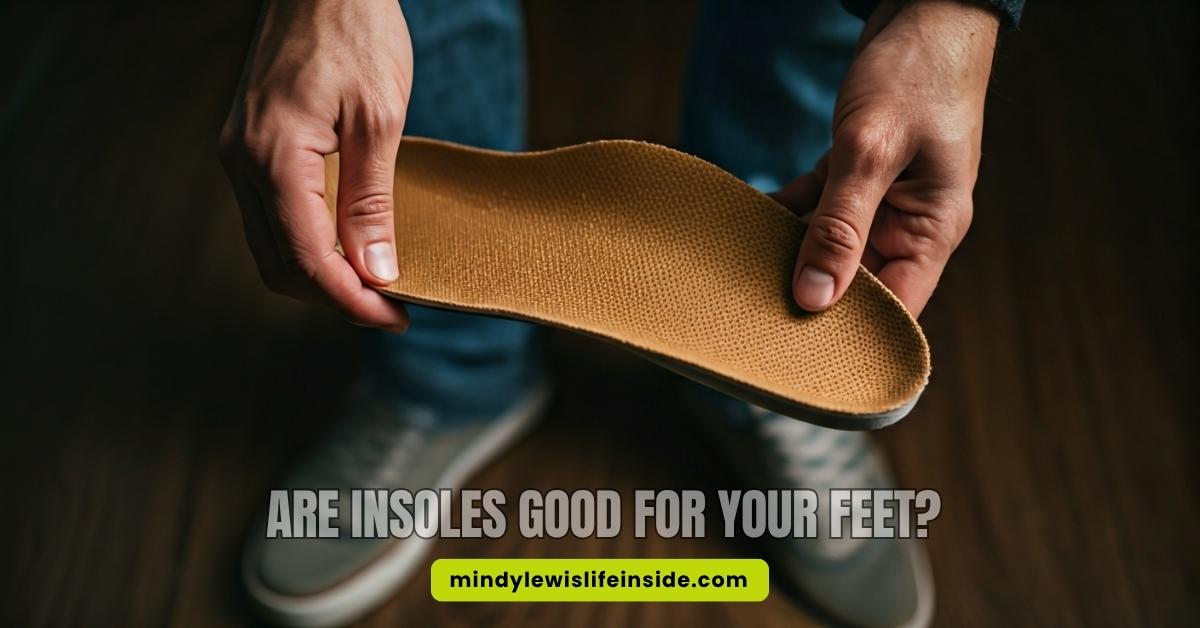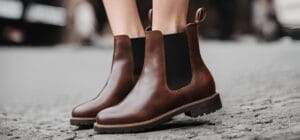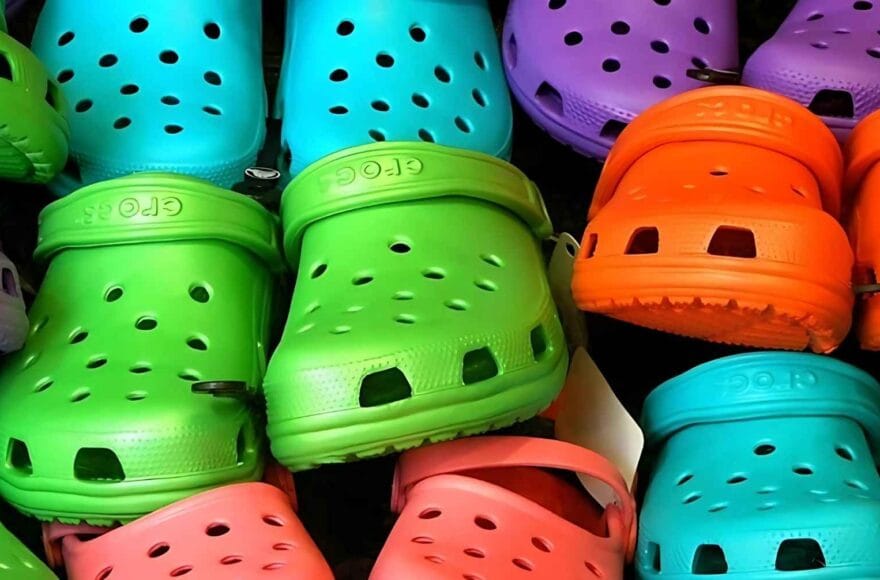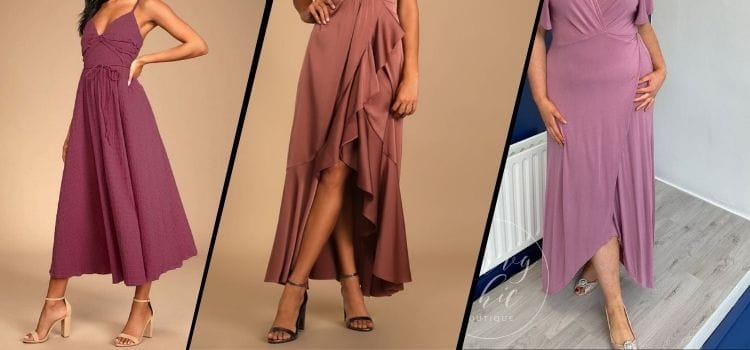Are Insoles Good for Your Feet? Myths Debunked

As an Amazon Associate, I earn from qualifying purchases
Foot pain can get in the way of how you move each day. It can come from plantar fasciitis, high arches, or standing for a long time. To get good support and feel better, you need proper alignment and good cushioning.
These things can help with pain and help you move better. Insoles are now a popular way to help people with these problems. They give support made to fit your needs. But are insoles really good for your feet? How do you pick the right one for you?
Read on to find out more about insoles, foot pain, and the real benefits you can get from the right support.
Understanding Insoles: Purpose and Types
Insoles, also called shoe inserts, are made to give comfort and support where your feet need it most. If you have flat feet or struggle with plantar fasciitis, these types of insoles can give the extra cushioning you need. This can help stop foot fatigue, so you feel better during the day.
There are many types of insoles, from memory foam that feels soft, to firm insole arch support that keeps your feet in place. Knowing about these types of insoles helps you pick what works best for your life. You can use the right insole for running shoes, dress shoes, or any casual shoes you have.
What Are Insoles and How Do They Work?
Insoles are thin pads that you put inside shoes. They help with shock absorption, add arch support, and make shoes more comfortable. These are good for people who have foot pain from issues like plantar fasciitis, heel spurs, or flat feet. By spreading out pressure and absorbing every step, they help keep your feet, knees, and hips in line. This can make walking or running feel better.
Good insoles help your feet stay in the right position. Some come with a deep heel cup or firm arch support. These features hold your feet steady and stop them from rolling in or out too much. This helps with pain in your plantar fascia and gives support to other parts of your feet.
Insoles are not just for pain relief. They also keep your foot health in check, help you get through long days, and make it easier to stay on your feet. By lining up your feet well, you allow yourself to walk or stand with less effort. The right insoles work quietly in your shoes, letting you feel good with each step.
Different Types of Insoles Available in the U.S.
The many types of insoles on the market are made to fit different needs. Some give your feet more cushioning, while others help with proper foot alignment. Here is an easy list of common types of insoles and what they do, so you can see what works for you:
| Type of Insole | Key Features |
|---|---|
| Memory Foam Insoles | Have extra cushioning comfort. Great for casual use and basic support for your feet. |
| Custom Fit Orthotics | Made to match your foot type. Help with special conditions like plantar fasciitis. |
| Deep Heel Cup Insoles | Hold your heel in place and help with alignment. Good for heel pain or spurs because of deep heel support. |
| Flat Feet Insoles | Made for flat feet and to help with overpronation and arch pain. |
| High Arch Support Insoles | Give special arch support and good shock absorption. Best for athletes or people who run a lot. |
There are different support insoles for all kinds of activities and foot needs. No matter your arch type or if you deal with heel pain or plantar fasciitis, you can find the right insoles to give your feet the support they need. Arch support insoles with memory foam or a deep heel cup can make a big difference, especially if you want relief or extra comfort for flat feet, running, or just everyday use.
Common Myths About Insoles
There are a lot of wrong ideas about shoe inserts. Many people think that insoles will fix all foot health problems right away. This is not true. The real use of these products is to give targeted relief for foot pain. They are helpful, but not miracle workers.
Some also say that all shoe inserts are the same and work well for everyone. This is not correct. Cheap shoe inserts can be badly made. They might not support your feet in the right way and, instead, could make foot pain worse. You need to look at the facts and know what each product does. This will help you make a better choice for your foot health.
“Insoles Cure All Foot Problems”
One big myth out there is that insoles can fix every foot problem. The truth is, while insoles help a lot with foot pain, plantar fasciitis, and high arches, they are not a cure for every foot issue out there. There are certain things, like really bad heel pain or issues with your joints, that need more help than just using insoles. You have to see an expert in those cases.
Take plantar fasciitis or shin splints as an example. Proper insoles can give good support and add extra cushioning. They give your feet the right alignment and can make you feel much better. But if you only use a shoe insert and do nothing else to help, you might not get the full results you want. Some problems, like tightness in the Achilles tendon, may need more than that, so it is important to look at what is really causing the pain.
So, insoles are good tools. They may be used by many people, but they are only one part of getting better. For many people, it is also good to talk to a podiatrist and get advice on exercises or other treatments. This will help you get long-term relief from foot pain, heel pain, and more.
“All Insoles Are Created Equal”
Another thing people get wrong is thinking that all insoles give the same comfort and support. This is not true at all. Things like if you have a high arch, a low arch, or flat feet make a big difference when picking the best insoles for you.
For example, if you are an athlete, you might want insoles that have a lot of arch support for good shock absorption and firm support for long distances. That is not the same as what someone with heel pain from day-to-day life might need. They may want softer, cushioned insoles. You can look at brands like Spenco RX Comfort Insole or Superfeet Hike Support if you need insoles for things like long workdays, running shoes, or walking on uneven terrain. Each option helps with a certain need or foot type.
What the new insoles are made of matters, too. Some have memory foam, while others have more solid or firm support. What works well for your casual shoes may not give enough comfort in dress shoes, or the other way around. So, always try to match the support insoles with your foot type and with what you will use them for. This is the way to get good results and comfort every day.
The Science Behind Insoles: Do They Really Help?
Many scientific studies show that insoles help with pain relief and better foot health. Insoles give your foot proper alignment. This takes pressure off your arches, heels, and knees.
Research shows that insoles help people with plantar fasciitis, arch pain, and heel pain. Podiatrists say that insoles are good for shin splints and even lower back problems. This means insoles are helpful for comfort all over the body. In the next part, we will look at how insoles give pain relief and in which cases they work best.
Scientific Evidence Supporting Insoles
Research shows that insoles help improve foot health. Leading medical studies say that insoles cut down arch pain by keeping the foot in the right place. They also give extra cushioning. This change in how pressure is spread on the foot is good for people with plantar fasciitis, heel pain, or pain in the knees.
Many podiatrist-tested designs include deep heel cups. These heel cups help keep your foot stable. They lower strain when you move. The extra features also help bring down impact, so your joints stay safe. You will see that athletes often rely on insoles. They use them to lower the risk of overuse injuries and to keep proper foot alignment, even over long distances.
Dr. Michael Donato, a top doctor in this field, says that special custom orthotics give more correction. Still, even high-quality over-the-counter insoles bring more comfort and cut pain. More proof keeps showing that both custom and store-bought insoles matter for stopping foot discomfort and keeping your joints and feet healthy.
Transition: Now that it is clear that insoles work, let’s look at which specific conditions see the most benefit.
Conditions That May Benefit from Insoles
Many foot problems can get better when you use the right insoles. People with plantar fasciitis often feel better when using ones that offer extra support and shock absorption for the plantar fascia.
If you have flat feet or high arches, custom orthotics can help by giving extra support and improving foot health. The right insoles can also help with heel pain, shin splints, and foot fatigue. They give your feet proper alignment, cushioning, and comfort for different kinds of shoes and activities.
Insoles for Specific Foot Conditions
Some foot problems can get much better with special insoles. People who have plantar fasciitis often need deep heel cups and extra cushioning. These insoles give good shock absorption, which helps lower heel pain and helps keep proper foot alignment. For those with flat feet, arch support insoles that match their foot type can give better stability and help with arch pain.
Runners who deal with shin splints can use custom-fit shoe inserts. These give more support, help foot health, and can make running long distances easier. Whether you need support insoles for arch support, deep heel cups, or extra cushioning, the right shoe inserts can make a difference in how you get through each day.
Plantar Fasciitis Relief with Insoles
Insoles made for plantar fasciitis help with pain relief and support your foot to keep it in the right position. They have a deep heel cup and firm arch support. These shoe inserts take pressure off the plantar fascia and can make heel pain less, so you feel better as you move. Some insoles use memory foam for extra cushioning and better shock absorption.
These work well if you have high arches or flat feet. If you use these insoles often, your foot health can improve. You may be able to stay active for a long time without getting more foot fatigue or extra arch pain.
Flat Feet and Arch Support Solutions
There are many types of insoles made for flat feet that give strong arch support and help with foot health. By wearing supportive insoles, you spread your weight out evenly. This helps with proper alignment of the feet and can lower pain, like heel pain or even lower back pain. If you need more support, high arch insoles or custom orthotics can be made for your foot type. These work well to stop your feet from getting tired during long days or when you do a lot.
Some insole materials, like memory foam or carbon fiber, are good for shock absorption. They help make walking and running easier and more comfortable, featuring a top layer that enhances durability. They also cut down the risk of getting hurt, which is important if you lead an active life. If you want better foot health, these features can make a real difference.
Choosing the Right Insole for Your Lifestyle
Choosing the right insole comes down to what you do each day and your foot type. If you are active, like if you wear running shoes a lot, the right insoles can give you shock absorption and extra support. This helps lower foot fatigue and can also help with knee pain.
If you spend most of your day standing, you need a supportive insole with good cushioning. This kind of insole helps keep your feet comfortable and keeps everything in proper alignment all day. When you know your arch type and the way you live, you can pick the insole that works best for you.
There are insoles made for different arch heights, so you can get enough support and lower your risk of discomfort or injury during regular use.
Insoles for Athletes and Runners
Optimal performance in sports starts with good foot health. That is why the right insoles are so important for athletic trainers, athletes, and runners. There are different types of insoles, like ones made for shock absorption or arch support. These help you get proper foot alignment.
Many people deal with heel pain or foot fatigue, especially when they spend a long time on their feet or move across uneven terrain. A supportive insole can help with this discomfort. It gives you more comfort over long distances.
There are custom-fit solutions to consider. High arch insoles or memory foam insoles can work for different foot types, providing purpose support. This means you get more comfort and better performance because your insoles fit your feet the way they should.
Best Insoles for Standing All Day at Work
Standing for a long time can cause your feet to get tired and hurt. That is why it is important to pick the right insoles with excellent arch support. For the best shock absorption and support on long days, you should look for a supportive insole made with memory foam or deep heel cups. These can help with proper alignment and give you extra cushioning.
Some, like the ones from Superfeet and Spenco, are made for people who work in busy places. Getting a good insole can also help reduce heel and arch pain. Taking care of your foot health will make you feel better all over, even on the most tiring days.
Custom vs. Over-the-Counter Insoles
Custom orthotics are made to fit your foot type. They give a solution that matches what you need if you, or someone you know, has foot pain or if your feet are not lined up right. These can give the best shock absorption and arch support. This can be good for people who have certain problems with their feet.
On the other hand, over-the-counter insoles are easy to find and can be bought by anyone. They give a fast way to get extra cushioning or support. They do not have a fit made just for you. Still, using these can help make your foot health better. They are good for fixing common problems like heel pain or foot fatigue. Many people like to use them if they want simple help or when they get tired of standing on their feet.
Pros and Cons of Custom Orthotics
Custom orthotics give many benefits to people who have certain foot conditions. They give the right support for all types of arches. These insoles also help with shock absorption and keep proper foot alignment. Because of this, they help lower pain from plantar fasciitis and flat feet.
But, custom orthotics can cost more than store-bought ones. The higher price may be tough for some people. Also, you may need some time to get used to them. There can be some discomfort at first.
If you think about all these good and bad sides, it will help you make a choice for the best insoles for your foot health.
When to Choose Over-the-Counter Insoles
Over-the-counter insoles are a good choice for foot health if you need fast help with small foot pain or want more support in your shoes. They work well in both casual and sports shoes. If you have foot pain from plantar fasciitis or flat feet, these top pick counter insoles give extra cushioning and help keep proper alignment. You do not need to worry about getting custom orthotics.
These insoles fit many different arches and give shock absorption, too. They are great for long days when you are on your feet or doing light to moderate activities.
Potential Risks and Misconceptions
Some people think that using insoles might make their foot problems worse. But the right kind of supportive insole can help fix proper foot alignment. It can also help with heel pain or plantar fasciitis.
Many people get confused because they pick insoles that do not match their arch type or foot health needs. This can cause foot fatigue or make them feel uncomfortable.
It is important to know about the different types of insoles and what each can do. This way, you can lower the risk of making things worse and help your feet stay healthy.
Can Insoles Make Foot Problems Worse?
If you use insoles the wrong way, they can make foot problems worse. This can bring more pain or make your feet feel uncomfortable. It is important to pick the right type of insole for your foot needs. You should talk to a healthcare professional. They can help you avoid problems and make sure you get the best support for your feet.
Signs You’re Using the Wrong Insole
If you feel any foot discomfort, it may mean the insole you use is not right for you. If you often get arch pain or heel pain, or pain in your knee and lower back, that can show there is not enough support or things are not lined up right.
When you get tired fast while doing things like walking or running, it can be because there is not enough shock absorption or good cushioning. If you feel unsteady when you walk on uneven terrain, you may not get the right amount of support for your feet. It is good to check your insoles often to help keep your foot health in top shape.
Expert Opinions: What Podiatrists Say
Podiatrists say it is important to pick insoles that match your own foot shape and needs. They often suggest custom orthotics if you have a lot of foot pain, like from plantar fasciitis or flat feet. These custom supports are good because they give just the right help for your feet and make sure you have proper alignment.
Experts think that you can use store-bought insoles if your foot pain is only mild, especially if you have neutral arches or just want some extra cushioning. It is also good to see a foot doctor now and then. This makes sure the insoles you use help with your foot pain and stop other problems, such as knee or lower back pain.
Recommendations from American Podiatric Medical Association
Recognizing how important good foot health is, the American Podiatric Medical Association says you should pick insoles that match your foot type and any special needs, like flat feet or plantar fasciitis.
They say you should go for insoles that offer enough shock absorption and give arch support, especially if you have heel or arch pain. If you run, hike, or do other sports, use insoles made for running shoes or hiking. These can give you more cushioning and stability.
It is important to check how your feet feel from time to time, so you know if your insoles are still giving you proper alignment, support, and comfort.
When to Consult a Foot Specialist
If you have foot pain that does not go away, even after you try different insoles, it may be time to see a professional. Common signs to watch for are sharp heel pain, pain that stays with you during daily tasks, or if the way you walk starts to change.
These could mean that there is a bigger problem. Some people with long-term issues like plantar fasciitis or flat feet might also need special help. Ankle specialists know how to give advice that fits your needs, which helps keep proper foot alignment and improves foot health. Seeing a specialist early can help stop things from getting worse and help you get better faster.
Conclusion
Insoles are a practical way to help with many foot conditions. They can do a lot for your foot health. People with plantar fasciitis or flat feet can benefit from the right insoles. Good insoles give the support that you need. This helps to bring proper alignment to your feet and makes you feel less discomfort.
Choosing the correct type and fit is important for pain relief and better performance, too. This is true if you are an active person or if you spend a lot of time on your feet each day. When you know the benefits and limits of using insoles, you are able to make better choices for your care. This helps your feet get what they need to stay healthy and keep you moving.
Frequently Asked Questions
Do insoles really help with back, knee, or hip pain?
Insoles can help with back, knee, and hip pain because they improve how your feet line up and give them better support. But how well they work will depend on each person’s needs. It is important to talk to a healthcare professional first. This helps you know if using insoles is good for your pain.
How long should I wear insoles each day?
Wearing insoles each day will depend on what you need and what works for you. It is good to start by wearing them for a few hours at first. If you feel good, you can slowly wear them for a whole day. Always pay attention to your body. If you feel pain or something does not feel right, you may need to change how they fit or not wear them as long. You should talk to a specialist if you want advice that fits you best.
How do I know if I need custom insoles or store-bought ones?
To find out if you should get custom insoles or buy the ones from a store, you need to look at how bad your foot problem is. If you have foot pain that does not go away or if there is something wrong with the shape of your foot, you should visit a podiatrist. The podiatrist can give advice that fits you best. If the problem is mild, store-bought insoles can be a good and less expensive way to help with it.
Can insoles be used in any type of shoe?
Yes, you can use insoles in many types of shoes. This includes athletic shoes, dress shoes, and casual shoes. But you need to make sure the insole fits well. A good fit keeps the shoes comfortable and helps with support. Always look at how the insole works with the shoe before you pick one.
How often should insoles be replaced?
Insoles need to be changed every 6 to 12 months. You might also need to swap out your pair of insoles sooner if they start to look worn out or damaged. Doing this on time will help give your feet the best support and comfort. When you keep your insoles in good shape, you can help stop foot problems that might come from not enough cushioning or support.
How long do insoles last?
Insoles typically last between 6 to 12 months, depending on usage and material quality. Daily wear can wear them down faster, while occasional use may extend their lifespan. Regularly inspect your insoles for signs of deterioration to ensure they continue providing the support your feet need for optimal comfort.
As an Amazon Associate, I earn from qualifying purchases









